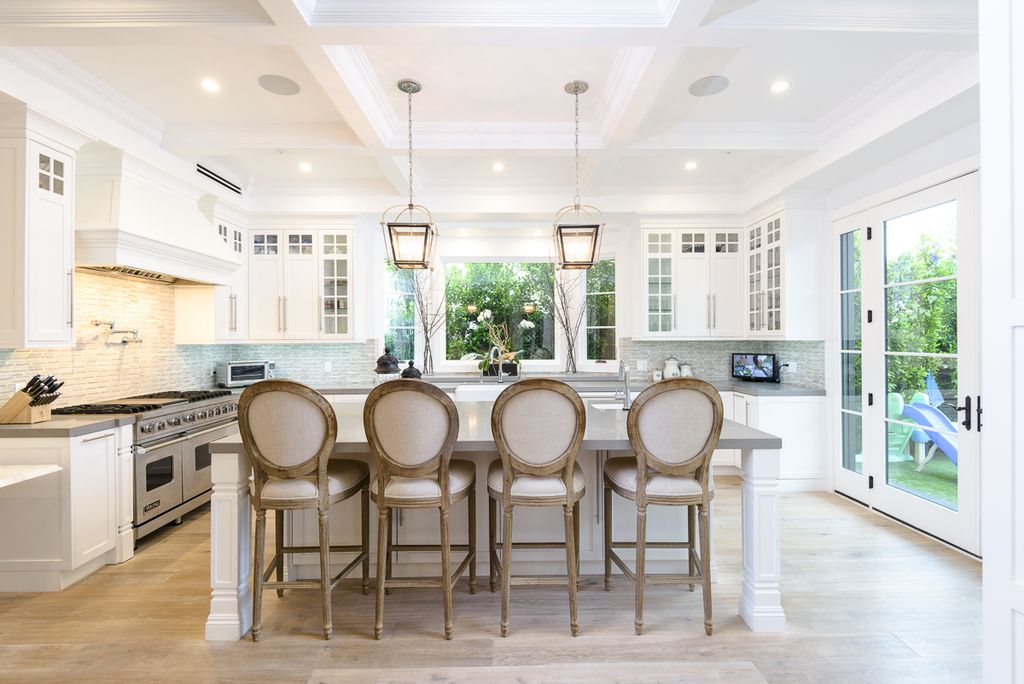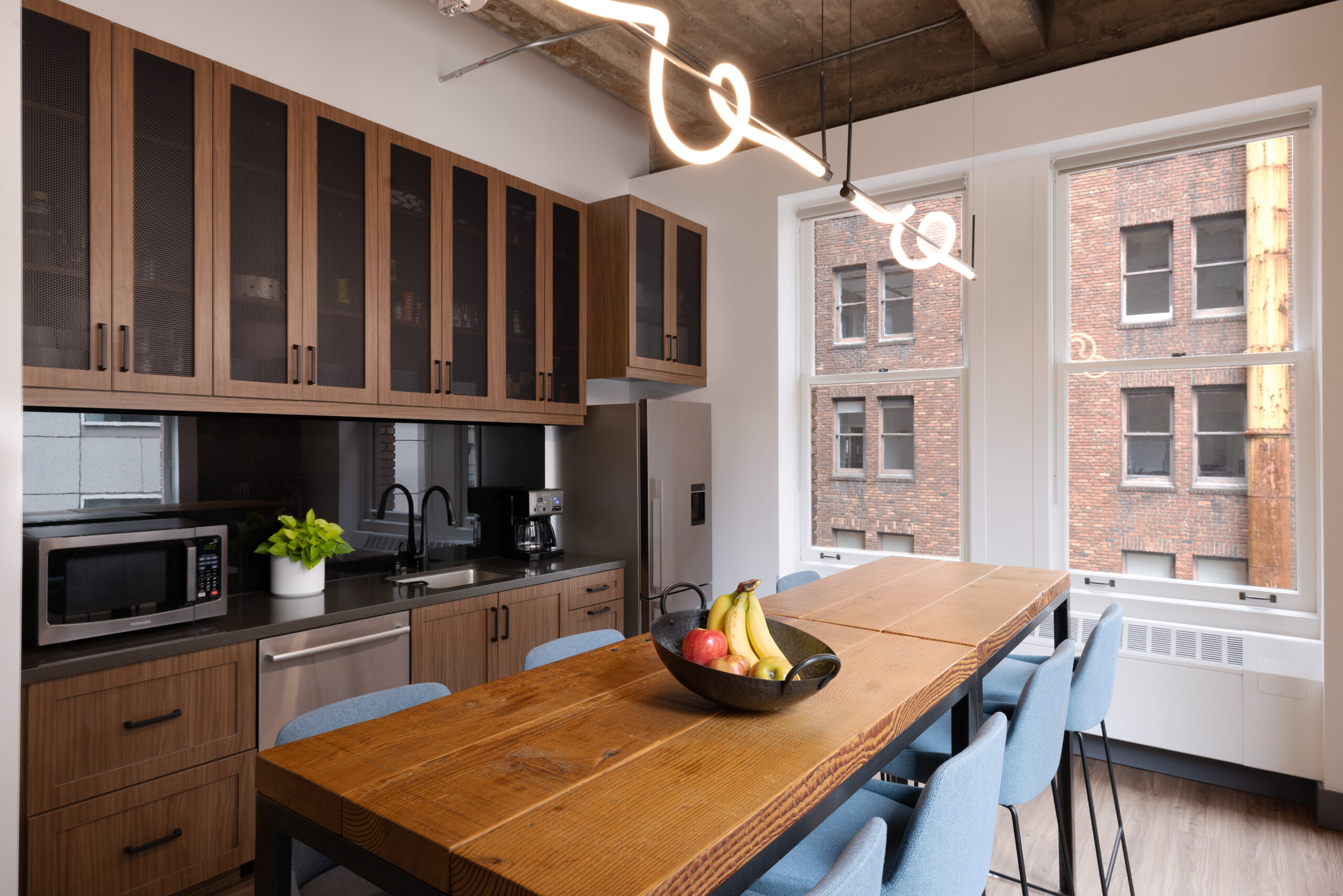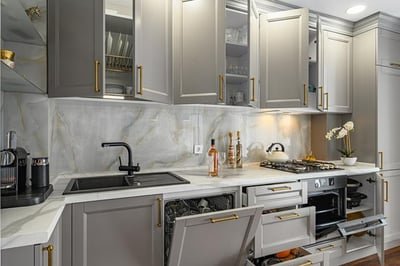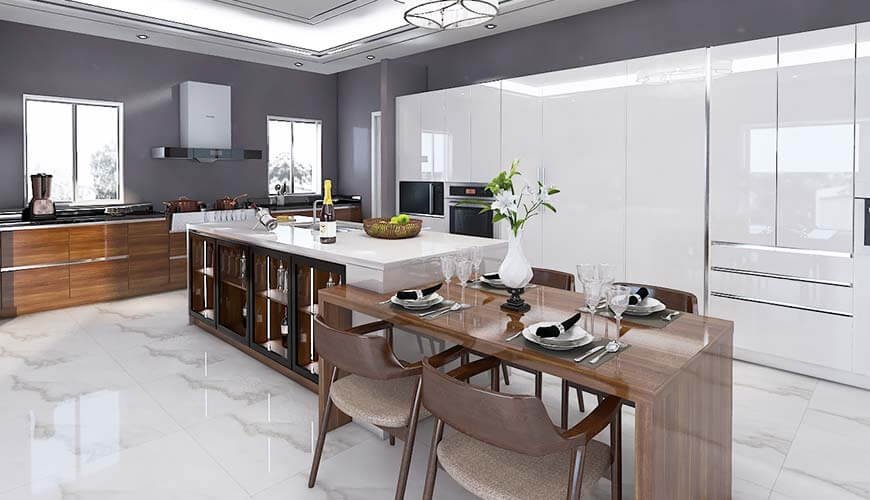Yes, kitchen cabinets are considered a capital improvement. They add value and extend the life of the property.
Kitchen cabinets play a crucial role in home improvement projects. They not only enhance the kitchen’s aesthetics but also increase the property’s overall value. Homeowners often choose to upgrade their kitchen cabinets for a modern look and better functionality. Investing in high-quality cabinets can be a significant selling point if you plan to sell your house.
Durable and stylish cabinets improve storage solutions and elevate the kitchen’s overall appeal. Selecting the right materials and designs is essential for long-term benefits. Capital improvements like kitchen cabinets can also offer tax advantages, making them a smart investment for homeowners.

Table of Contents
ToggleWhat Are Capital Improvements?
Capital improvements are upgrades or additions that enhance a property. These changes often increase a property’s value or prolong its useful life. Understanding capital improvements is crucial for homeowners.
Definition
A capital improvement is a permanent structural change. This change enhances a property’s value or usefulness. It is more than just regular maintenance or repairs.
For example, fixing a broken door is a repair. Replacing the door with a new, energy-efficient one is a capital improvement.
Examples
Many home projects qualify as capital improvements. Here are some common examples:
- Installing a new roof
- Adding a new room
- Upgrading electrical systems
- Replacing old windows with energy-efficient ones
- Constructing a deck or patio
| Project | Capital Improvement |
|---|---|
| Painting walls | No |
| Adding a new bathroom | Yes |
| Repairing a leaky faucet | No |
| Installing central air conditioning | Yes |
Knowing these examples helps homeowners distinguish between regular repairs and capital improvements. This distinction is key for financial planning and tax purposes.

Tax Implications Of Capital Improvements
Understanding the tax implications of capital improvements is crucial for homeowners. If you’re thinking about upgrading your kitchen cabinets, you might wonder if this counts as a capital improvement. Knowing how capital improvements impact your taxes can save you money.
Tax Deductions
Home improvements like new kitchen cabinets might qualify for tax deductions. Capital improvements can add value to your home, making them potentially deductible. Check with a tax professional to see if your kitchen cabinet upgrade qualifies.
| Type of Expense | Tax Deductible? |
|---|---|
| Routine Maintenance | No |
| Capital Improvements | Yes |
Ensure you keep all receipts and documentation. This helps prove the expenses were for capital improvements.
Depreciation
Depreciation allows you to spread the cost of the improvement over several years. This can lower your taxable income each year. For example, if your new kitchen cabinets cost $5,000, you might be able to depreciate that amount over a set period.
- Determine the total cost of your kitchen cabinets.
- Check the IRS guidelines for the depreciation period.
- Apply the annual depreciation amount to your taxable income.
This method can provide a significant tax benefit. It reduces the financial impact of the improvement over time.
Consult a tax advisor to understand the specific depreciation rules for your situation. They can guide you in maximizing your tax benefits.
Kitchen Cabinets: An Overview
Kitchen cabinets play a pivotal role in the overall aesthetic and functionality of your kitchen. They provide essential storage space while enhancing the kitchen’s design. Whether you’re renovating or building a new kitchen, understanding the basics of kitchen cabinets is crucial.
Materials And Styles
Kitchen cabinets come in various materials and styles to suit different tastes and budgets.
| Material | Features |
|---|---|
| Solid Wood | Durable, classic look, versatile |
| Plywood | Strong, stable, cost-effective |
| Particleboard | Affordable, lightweight, easy to install |
| MDF | Smooth finish, ideal for paint |
Popular kitchen cabinet styles include:
- Shaker: Simple, clean lines, timeless appeal
- Flat-panel: Sleek, modern, minimalistic
- Inset: Classic, elegant, precise fit
- Beadboard: Cottage-style, textured, detailed
Costs
The cost of kitchen cabinets varies based on materials and styles. Here’s a breakdown:
| Material | Cost Range (per linear foot) |
|---|---|
| Solid Wood | $100 – $300 |
| Plywood | $70 – $150 |
| Particleboard | $50 – $100 |
| MDF | $60 – $120 |
Additional costs to consider:
- Installation: Professional installation ranges from $50 to $100 per hour.
- Hardware: Handles, knobs, and hinges add $2 to $20 per piece.
- Customization: Custom cabinets increase the price significantly.
Quality kitchen cabinets enhance your home’s value and functionality. Choose wisely based on your needs and budget.
Criteria For Capital Improvements
Understanding the criteria for capital improvements is essential for homeowners. Capital improvements can affect your property’s value and tax implications. Knowing these criteria helps in making informed decisions about home renovations.
Permanent Addition
A capital improvement must be a permanent addition to the property. It should enhance the home’s value or extend its useful life. For example, installing new kitchen cabinets qualifies if they become a fixed part of the home.
Permanent additions involve:
- Construction of new structures
- Major system upgrades
- Significant landscaping projects
Temporary repairs or cosmetic upgrades do not count as permanent additions. The improvement must be long-lasting and integrated into the property.
Value Enhancement
Another criterion is the value enhancement of the property. A capital improvement should increase the home’s market value. New kitchen cabinets can make the kitchen more functional and appealing.
Examples of value enhancements include:
- Modernizing outdated systems
- Adding energy-efficient features
- Upgrading to high-quality materials
These enhancements should provide a substantial increase in the property’s value. Simple repairs or maintenance do not qualify as value enhancements.
| Criteria | Description |
|---|---|
| Permanent Addition | Long-lasting and integrated into the property |
| Value Enhancement | Increases the market value of the home |
Are Kitchen Cabinets Capital Improvements?
Are you wondering if kitchen cabinets are considered a capital improvement? This question often arises during home renovations. Understanding the classification of your kitchen project can have significant tax implications. Let’s dive into the details to help you make an informed decision.
Renovation Vs. Replacement
Not all kitchen updates qualify as capital improvements. The key difference lies in whether you are renovating or replacing your cabinets.
| Renovation | Replacement |
|---|---|
| Updating cabinet doors | Installing entirely new cabinets |
| Repainting or refinishing | Changing the layout |
| Adding new hardware | Using higher quality materials |
Renovations often involve minor updates. These changes might not qualify as capital improvements. On the other hand, replacements usually involve significant upgrades. These can qualify as capital improvements.
Longevity And Durability
Longevity and durability play a crucial role in classifying kitchen cabinets as capital improvements. Capital improvements typically add value and extend the life of your home.
- High-quality materials last longer.
- New cabinets improve functionality.
- Durable cabinets require less maintenance.
Consider the lifespan of your new cabinets. If they significantly enhance your kitchen’s durability, they are likely a capital improvement.
In summary, the classification of kitchen cabinets as capital improvements depends on the scope of the project. Major replacements with durable materials are often considered capital improvements.
Legal Considerations
When upgrading your kitchen cabinets, it’s important to consider the legal aspects. Understanding the legal framework can save you time and prevent penalties. Here, we explore the key legal considerations.
Building Codes
Building codes ensure that your kitchen upgrades meet safety standards. Kitchen cabinets must comply with local building codes. These codes cover aspects like material, installation, and structural integrity.
Ignoring building codes can lead to fines or forced removal of cabinets. Always check with your local building department before starting your project.
| Aspect | Requirement |
|---|---|
| Material | Non-combustible or fire-resistant |
| Installation | Securely fastened to walls |
| Structural Integrity | Able to support intended load |
Permits
Permits are often required for significant kitchen renovations. They ensure that your project meets local laws and regulations.
Not all cabinet replacements need permits. Small changes might not require one. But major overhauls usually do. Always verify with your local authorities.
Here’s a simple list of actions to take:
- Check if your project needs a permit.
- Submit the required documents.
- Wait for approval before starting work.
Securing permits helps avoid legal issues and ensures safety. Always keep a copy of your permit on-site during construction.
Case Studies
Exploring real-world examples can help understand if kitchen cabinets qualify as a capital improvement. Here, we dive into various homeowner experiences and expert opinions.
Homeowner Experiences
Many homeowners have shared their journeys with kitchen renovations. Let’s look at some specific cases:
| Homeowner | Project Details | Outcome |
|---|---|---|
| John Doe | Replaced old cabinets with custom-made wooden cabinets. | Increased home value by 10%. |
| Jane Smith | Installed high-quality, pre-fabricated cabinets. | Boosted kitchen functionality and aesthetics. |
| Emily Clark | Switched to eco-friendly, sustainable cabinets. | Qualified for green home tax credits. |
Expert Opinions
Experts often weigh in on whether kitchen cabinets are a capital improvement. Their insights can be valuable:
- Real Estate Agents: They suggest new kitchen cabinets can make a home more marketable.
- Tax Advisors: They highlight that cabinets may be capital improvements if they add value.
- Home Appraisers: They often note upgraded cabinets in home appraisals.
Experts agree that high-quality cabinets can enhance a home’s value. They also stress the importance of documentation. Keeping receipts and detailed records can support your case for a capital improvement.
Financial Benefits
Upgrading kitchen cabinets can provide significant financial benefits. These improvements not only enhance the aesthetics and functionality of your home but also offer substantial returns. Below, we explore the financial perks of investing in new kitchen cabinets.
Resale Value
New kitchen cabinets can boost your home’s resale value. Potential buyers often look for updated kitchens. An attractive kitchen with modern cabinets can make a strong impression. This can lead to higher offers from buyers.
Here are some key points:
- Modern cabinets can make your home more appealing.
- Updated kitchens often lead to quicker sales.
- Higher resale value can offset the cost of new cabinets.
Tax Benefits
Kitchen cabinets can be considered a capital improvement. This means potential tax benefits. Capital improvements can increase your home’s value. They can also extend its life.
Consider these tax advantages:
- Capital improvements may be tax-deductible.
- They can reduce capital gains tax when selling your home.
- Keep all receipts and documentation for tax purposes.
Consult a tax professional to understand specific benefits. This can help you maximize your savings.
Diy Vs. Professional Installation
When upgrading kitchen cabinets, many homeowners face a crucial choice: DIY or professional installation? Each approach has its advantages and drawbacks. Understanding these can help you decide the best route for your kitchen renovation project.
Cost Comparison
One major factor influencing your decision is cost. DIY installation can be significantly cheaper. You avoid labor costs, which can make up a large portion of the expense. Here’s a quick comparison:
| Aspect | DIY Installation | Professional Installation |
|---|---|---|
| Labor Cost | $0 | $500 – $2,500 |
| Tools & Equipment | $100 – $300 | $0 |
| Time Investment | High | Low |
| Total Cost | $100 – $300 | $500 – $2,500 |
DIY installation saves money but demands time and effort. Professional installation is costlier but ensures convenience and expertise.
Quality And Warranty
The quality of the installation can affect the longevity of your cabinets. DIY enthusiasts often lack the precision professionals bring to the table. Poor installation can lead to issues like uneven alignment or loose fixtures.
Professionals ensure high-quality work. They use specialized tools and techniques, providing a polished finish. This quality often comes with a warranty, giving you peace of mind.
- DIY Installation
- Quality: Varies based on skill level.
- Warranty: Usually none.
- Professional Installation
- Quality: Consistently high.
- Warranty: Typically included.
Choosing between DIY and professional installation for your kitchen cabinets depends on your budget, time, and skill level. Weighing the cost against the quality and warranty can guide you to the best decision for your home.

Frequently Asked Questions
What Is A Capital Improvement?
A capital improvement is a permanent structural change or restoration that enhances a property’s value.
Are Kitchen Cabinets Capital Improvements?
Yes, new kitchen cabinets can be considered capital improvements if they add value and extend the property’s life.
Do Kitchen Cabinets Increase Home Value?
Yes, updated kitchen cabinets can significantly increase the overall value of a home.
How Do You Classify Kitchen Cabinets?
Kitchen cabinets are classified as capital improvements when they are part of a remodel that enhances the home.
What Qualifies As A Capital Improvement?
Permanent changes or upgrades that add value, prolong life, or adapt a property for new use qualify.
Are Kitchen Renovations Tax Deductible?
Kitchen renovations, including cabinets, are not directly tax-deductible but can be capitalized and depreciated.
Do Kitchen Cabinets Need Permits?
Permits may be required for kitchen renovations, including cabinets, depending on local building codes.
How Long Do Kitchen Cabinets Last?
High-quality kitchen cabinets can last 20-30 years with proper care and maintenance.
Can I Depreciate Kitchen Cabinets?
Yes, you can depreciate kitchen cabinets over time as part of your property’s improvements.
Do Kitchen Cabinets Count As A Home Improvement?
Yes, installing or upgrading kitchen cabinets counts as a home improvement that can increase property value.
Conclusion
Determining if kitchen cabinets are a capital improvement depends on various factors. Consult a tax professional for personalized advice. Proper classification can impact your tax benefits. Always keep detailed records of your renovations. This ensures you maximize potential deductions and maintain compliance with tax laws.
Investing in your kitchen can add significant value to your home.


